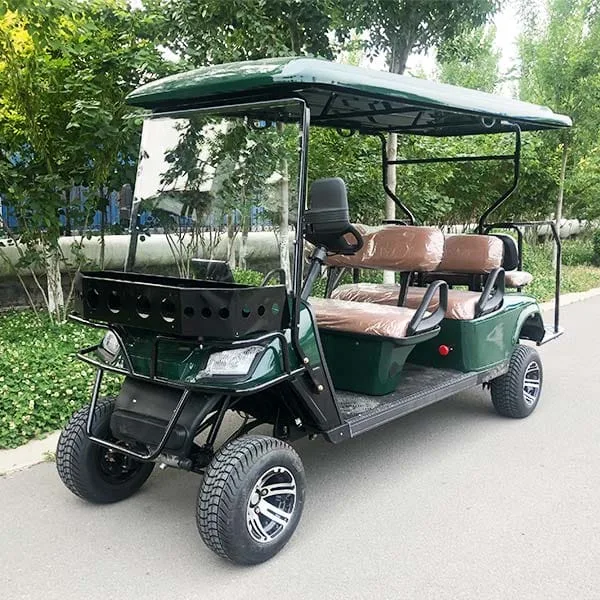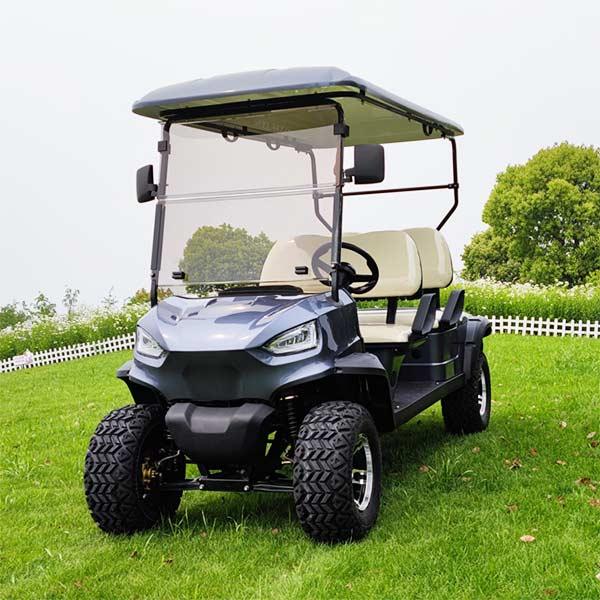Welcome to My Blog!
Before we dive into the content, I’d love for you to join me on my social media platforms where I share more insights, engage with the community, and post updates. Here’s how you can connect with me:
Facebook:https://www.facebook.com/profile.php?id=100087112105480
Now, let’s get started on our journey together. I hope you find the content here insightful, engaging, and valuable.
Table of Contents
Introduction
Picture gliding through your course or property in a stylish, high-powered golf cart that feels more like a sporty joyride than a slow utility vehicle. That’s what performance golf carts offer: a synergy of speed, comfort, control, and tech. Whether you’re upgrading from a standard cart or picking your first serious ride, it pays to understand what differentiates a performance model.
This guide walks you through the technical upgrades, real-world benefits, and key decision factors to help you choose wisely.

Defining a Performance Golf Cart
Traditional golf carts max out at 10–14 mph. Performance golf carts, on the other hand, are factory-enhanced or customized to achieve 18–25 mph, faster acceleration, better handling, and longer range. Key enhancements include:
- Higher-output electric motors (up to 7 kW) or premium gas engines (up to 15 hp)
- Independent, sporting suspension with shocks for each wheel
- Larger wheels (20–23″) and wider tires for grip
- Upgraded braking systems like 4-piston hydraulic discs
- Battery systems doubling the real-world range (50–80+ miles)
These upgrades turn a slow rolling cart into a precise, responsive machine.
Key Specs That Matter
| Specification | Standard Cart | Performance Cart | Benefit |
|---|---|---|---|
| Top Speed | 10–14 mph | 18–25 mph | Faster travel, more efficient use |
| Motor Output | 2–3 kW | 4–7 kW | Quicker acceleration, towing power |
| Battery Range | ~25 miles | 50–80+ miles | Full-day use without recharge |
| Suspension Type | Leaf/rigid | Independent shocks | Better ride & handling at higher speed |
| Wheel/Tire Size | 18″ | 20–23″ | Improved traction and aesthetics |
| Braking System | Drum brakes | Hydraulic discs | Safer, smoother stopping power |
| 0–20 mph Acceleration | 5–8 sec | 3–5 sec | Crisp and responsive feel |
| Weight (approximate) | 800–900 lb | 900–1,100 lb | Heavier but more stable |
These specifications highlight the dramatic performance jump, making everyday trips quicker, smoother, and more fun.
Electric vs Gas—Which Is Right for You?
Electric Carts
Pros: Quiet, low-maintenance, immediate torque, eco-friendly.
Cons: Heavier batteries, requires charging station, higher upfront costs.
Electric performance carts far outpace gas in smoothness and offer lower running costs thanks to fewer moving parts and no fuel. Ideal for modern facilities, campuses, and eco-conscious riders.
Gas Carts
Pros: Full-terrain range, fast refueling, lighter weight in some models.
Cons: Noisy, emissions, regular maintenance needed.
Gas-powered carts remain popular where charging is impractical or longer range is essential—like resorts, large estates, or at facilities without electric infrastructure.

Suspension, Handling & Ride Feel
Speed means nothing without control. Upgraded carts include:
- Independent shocks or coil-over kits front and rear
- Front stabilizer bars that reduce body roll
- Reinforced control arms with improved bushings
- Steering enhancements that tidy up alignment and reduce play
These upgrades provide a smooth, planted ride—even on rough paths—and ensure you remain in control when cruising or cornering.
Enhancing Comfort and Amenities
Performance doesn’t stop with power. Premium features to watch for include:
- High-density, all-weather seating
- Tilt steering wheels, ergonomic grips, and adjustable dash displays
- Built-in nav, Bluetooth, USB charging, and mounting dash cams
- LED lighting, weather tops, windscreens, and audio systems
- Stylish body kits, color schemes, aluminum wheels
These add both comfort and personal flair, turning your cart into a tailored experience.
Total Cost of Ownership
Performance carts cost more upfront, but hold value and utility longer. Consider:
- Battery replacement (7+ years) vs gas tune-ups
- Tire wear from larger wheels
- Brake maintenance costs
- Insurance and registration in some areas
Overall, many owners report full ROI within 3–4 years through saved maintenance, energy efficiency, and resale value.
Real Use Cases
- Large Campuses: Cover distances quickly and quietly
- Luxury Venues: Combine style, features, and smoothness for guests
- Worksites & Vineyards: Smooth transport with customized racks or hitches
- Recreational Use: A cart that’s both practical and fun for private courses
One university fleet switched to electric performance carts and cut annual energy costs by 60%, adding style with wrapped graphics and USB chargers for students.

Choosing the Right Performance Golf Cart
When shopping, evaluate:
- Intended use—commute, work, leisure?
- Fuel preference—electric vs gas
- Desired speed vs course rules
- Battery capacity and life expectations
- Suspension needs for your terrain
- Warranty, support, and spare part availability
- Customization options—upholstery, performance kits, body style
Discuss your vision with dealers or suppliers, test-drive models, and ensure you get the right fit from the start.
Maintenance Tips for Longevity
- Charge at consistent intervals—not empty or full—for battery health
- Align tires and rotate annually
- Flush hydraulic systems and check shocks
- Schedule annual brake inspections
- Clean and lube steering joints and suspension pivots every few months
Proactive maintenance keeps your cart running smoothly and safely at speed.
Conclusion
Performance golf carts bring power, precision, and personality to every ride. Whether powered by electric or gas, they’re engineered for speed, comfort, and reliability—while still performing daily duties.
If you’re ready to upgrade your ride or build a custom model to match your style, contact us today. We’re here to help you choose, customize, and maintain the perfect high-performance cart.
FAQ
Are performance golf carts street-legal?
Depends on local rules. Some allow them in gated communities or private roads with speed restrictions.
How long do electric cart batteries last?
Typically 5–7 years with proper maintenance and moderate use.
Is maintenance higher for performance carts?
Slightly—but value is added through better components and style; maintenance costs remain reasonable.
What top speed can I safely achieve?
While carts can reach 25 mph, most owners use 18–20 mph for daily driving to balance safety and control.
Can I retrofit my current cart for performance?
Yes. Upgrades like motor kits, suspension, brakes, and batteries are widely available—ideally installed by experienced technicians.





